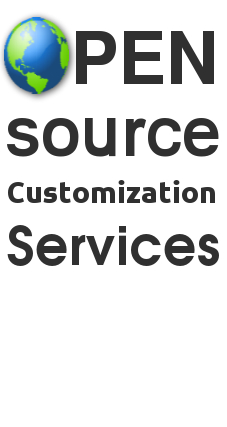Bernard Golden, a CIO.com
columnist, attends some of the conferences. After attending
conferences, he comes away with both an understanding of Enterprise
IT’s assurance to open source and some realistic advice for people,
who are considering open source enterprise solutions.
He just finished
attending two main conferences – the Cloud Foundry Summit and the
OpenStack Summit. When it comes to talking about both the
conferences, both were hives of activity with presence well up on the
earlier event.
According to him, the
most outstanding thing to him was the huge presence of large
enterprise IT decision makers – directors of applications,
architects and operations. Enterprise IT has big and growing
commitment to open source products in partiality to proprietary
alternatives.
The Advantages of Open
Source:
Well, it is the most
interesting and welcomes development as lots of enterprises
appreciate the benefits of open source-licensed products:
Wonderful Innovative:
Open source development is known for replicating Bill Joy’s law: It doesn’t matter who you are, there are lots of smartest people, who are working for someone else. For all the software vendors, it is true, so making use of a product with a potentially bigger developer base allows users to get complete access to greater innovation. There is another way as well – by enabling anyone to contribute code, it allows an open source product to incorporate unusual use cases that a proprietary vendor would either ignore or dismiss.
Open source development is known for replicating Bill Joy’s law: It doesn’t matter who you are, there are lots of smartest people, who are working for someone else. For all the software vendors, it is true, so making use of a product with a potentially bigger developer base allows users to get complete access to greater innovation. There is another way as well – by enabling anyone to contribute code, it allows an open source product to incorporate unusual use cases that a proprietary vendor would either ignore or dismiss.
Greater Transparency:
Not only the source code is obtainable as all of the design discussions, etc are obtainable in the open, in contrast to the enigmatic processes of proprietary vendors. However, it is extremely easy yet effective to assess the product and its community and decide if using the product is a good decision or not.
Not only the source code is obtainable as all of the design discussions, etc are obtainable in the open, in contrast to the enigmatic processes of proprietary vendors. However, it is extremely easy yet effective to assess the product and its community and decide if using the product is a good decision or not.
Huge Ability to
Influence Product Direction:
Mainly, it is a formula of the software industry. People, who are spending their gold, get to guide the boat. It is better to hope your product objectives align with the vendor or its large users if you are a small customer of an important proprietary software vendor.
Mainly, it is a formula of the software industry. People, who are spending their gold, get to guide the boat. It is better to hope your product objectives align with the vendor or its large users if you are a small customer of an important proprietary software vendor.
A Right Fit for
Containers
For third platform
applications, open source licensing models are a much better fit.
When it comes to their intrinsic load variability, it means that new
examples/containers are being initiated and stopped all the time.
It shows huge challenges
to proprietary code products as they are licensed on a perpetual
basis per example/container. In any case, if the application has
extremely high use more than 10% of its lifespan, which means
purchasing different licenses, which are rarely used. For static
applications, proprietary licenses are a right choice with steady use
profiles. By difference, open source licenses are a right choice for
the Third Platform world.
With no
per-server/container cost, applications can be designed to support
high load variability with no cost constraints. A lot of people
believe that Third Platform applications come to show the majority of
applications that mean open source will come to control new apps.
Believing That Open
Source for Your Enterprise
Open source is the main
feature of enterprise IT going forward – below, you can find some
of the important things to keep in mind:
Recognize Your Key
Open Source Components –
Some of the components will represent critical dependencies as open source will be spread across your applications. All are those, who you need to be particular about their maturity, community size and robustness and openness to code contributors and feature suggestions.
Some of the components will represent critical dependencies as open source will be spread across your applications. All are those, who you need to be particular about their maturity, community size and robustness and openness to code contributors and feature suggestions.
Develop Open Source
Skills –
Being a completely involved in open source is more than downloading and installing a software component for an application. It is important to comprehend the development pace likely sparseness of documentation. You will require such staff members, who are more eager to be engaged with a product and its community.
Being a completely involved in open source is more than downloading and installing a software component for an application. It is important to comprehend the development pace likely sparseness of documentation. You will require such staff members, who are more eager to be engaged with a product and its community.
Make a Decision What
to Add & What to Keep Internal –
It is essential for you to make a decision for any code you write as where to place it. If you have decided to add it to your product, your code will become an integral part of the product and be there in future releases. You also expect to keep it regular that means a constant commitment that is far less than the work you will take on if you do not add your code that needs re-integration with every release.
It is essential for you to make a decision for any code you write as where to place it. If you have decided to add it to your product, your code will become an integral part of the product and be there in future releases. You also expect to keep it regular that means a constant commitment that is far less than the work you will take on if you do not add your code that needs re-integration with every release.
Stay connected with us to
get more information on open source and its solutions as we keep
updating top huge information on open source. Moreover, you can also
get support from professional open source developers regarding any of
your queries related to your project!



















